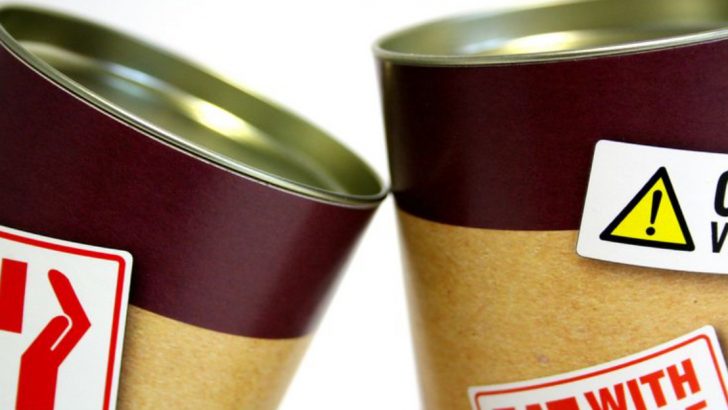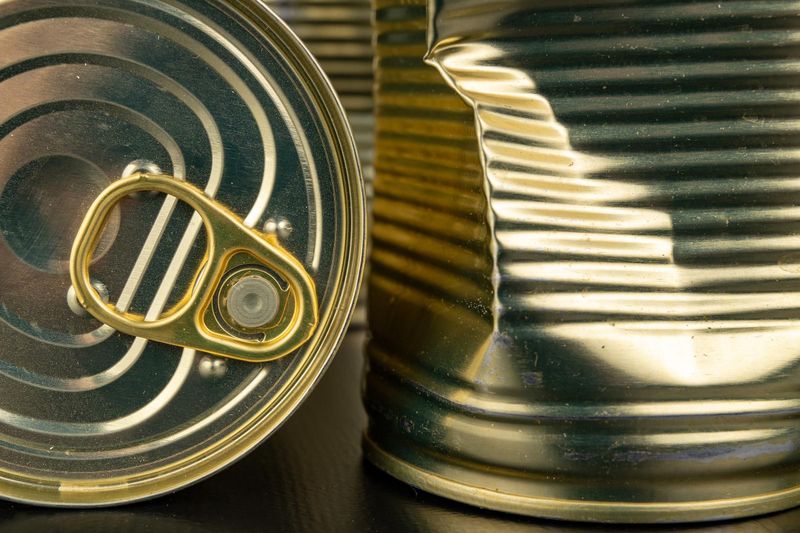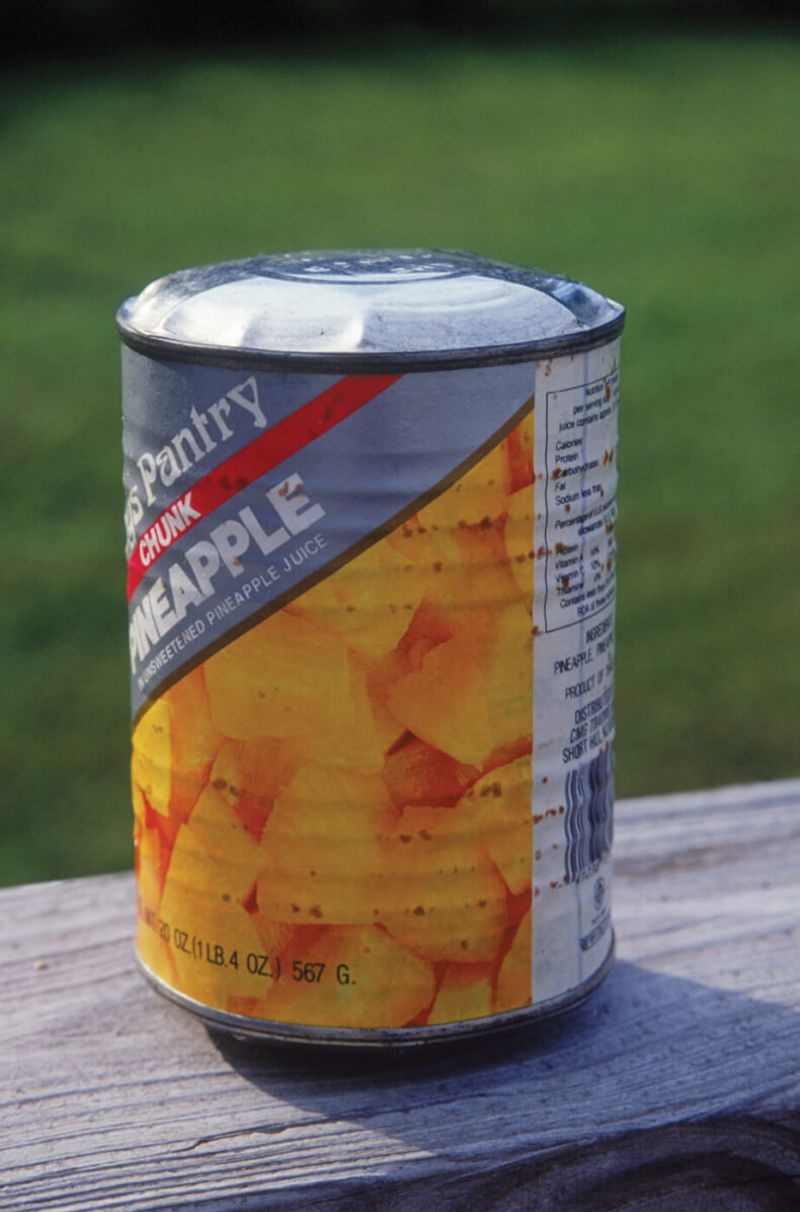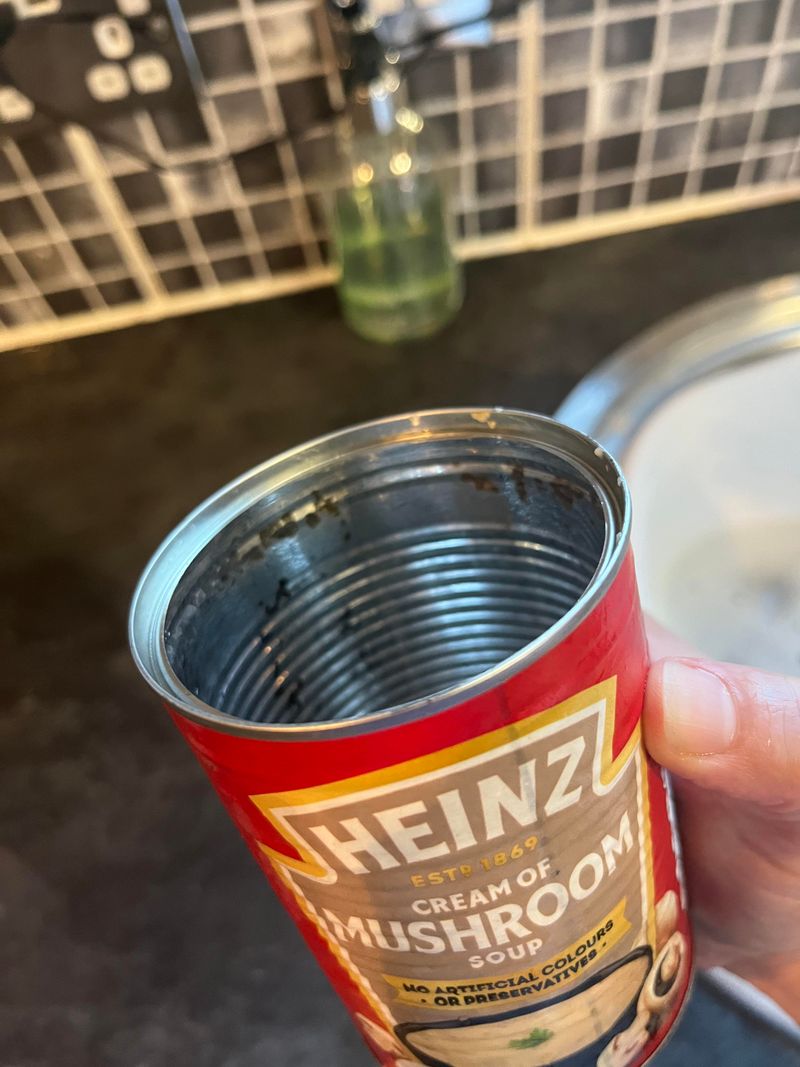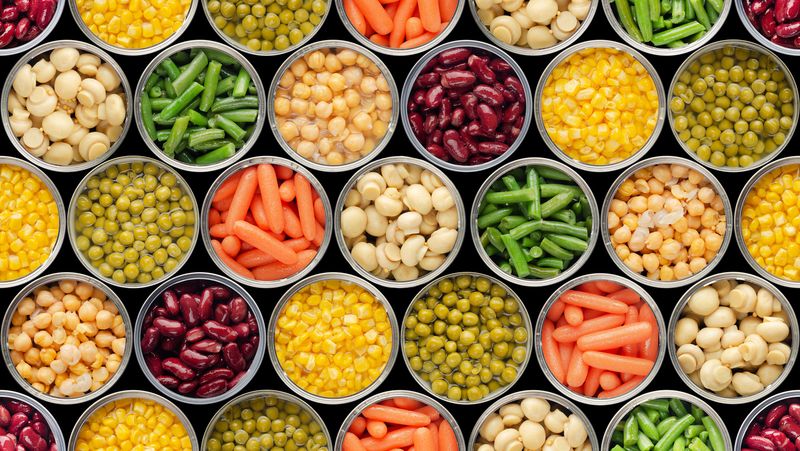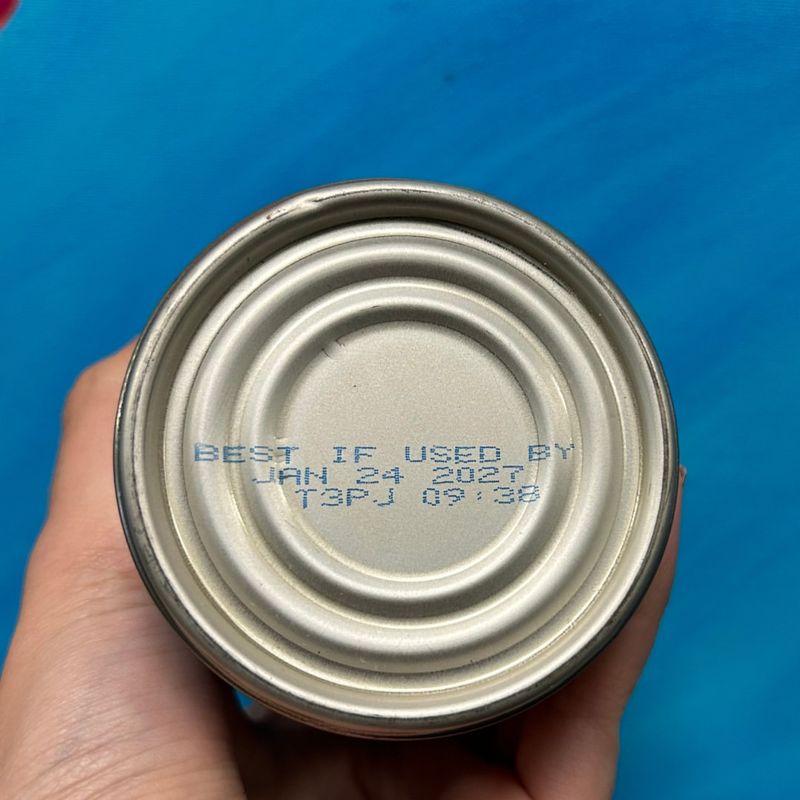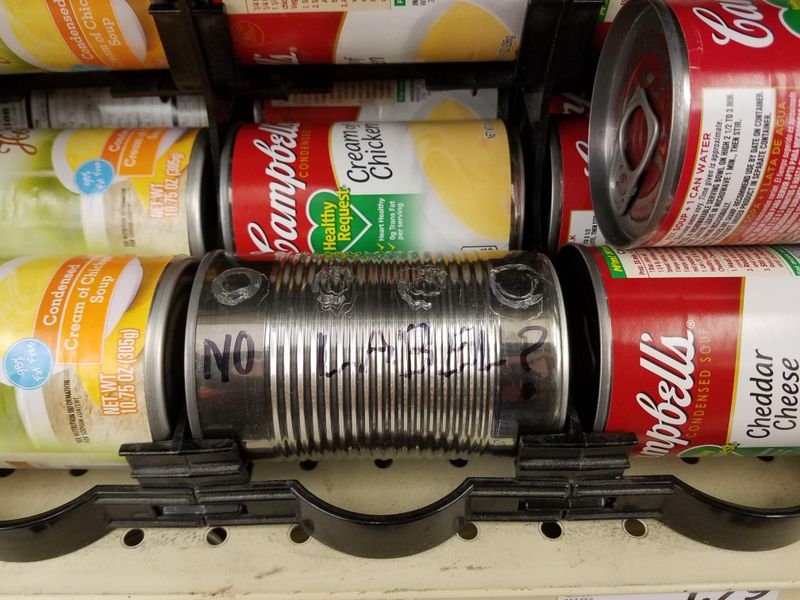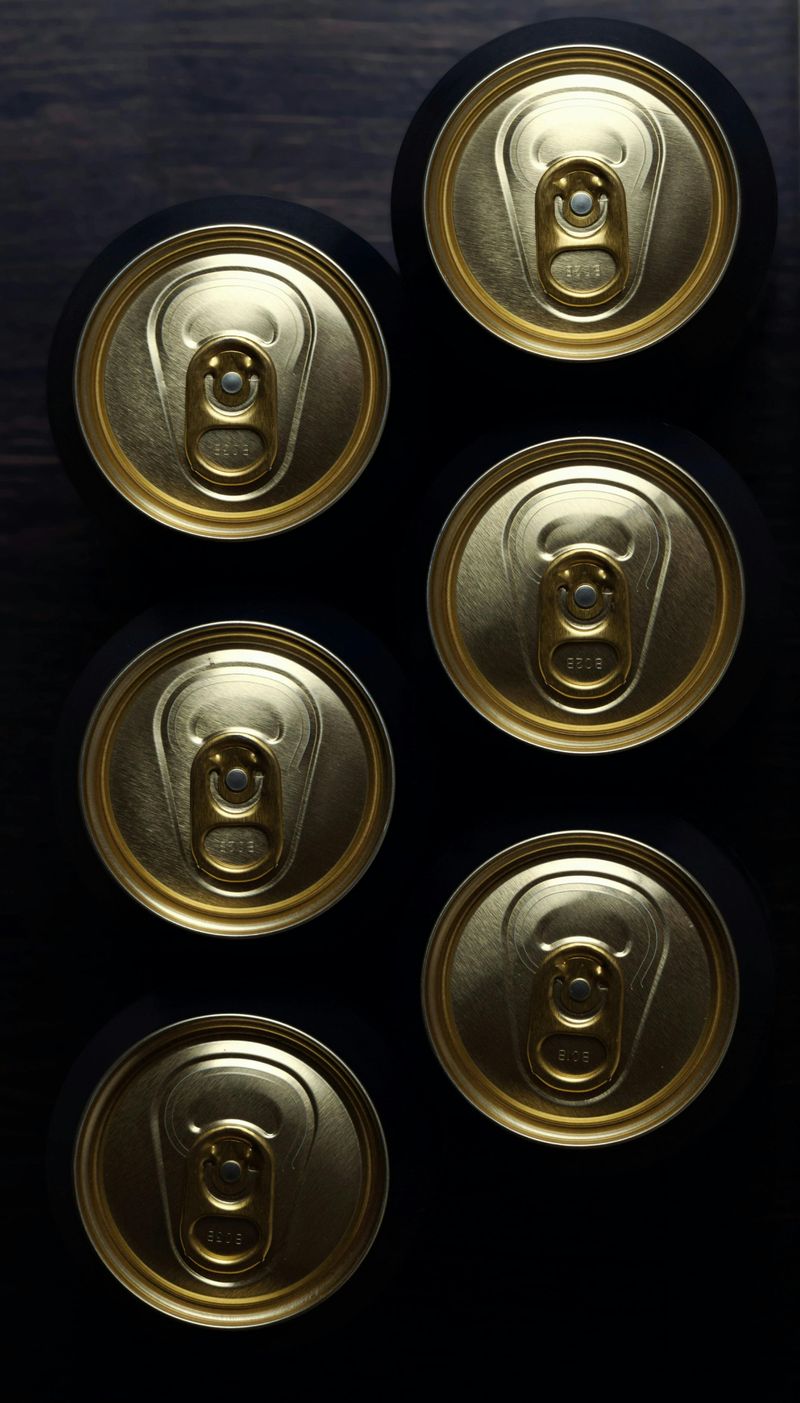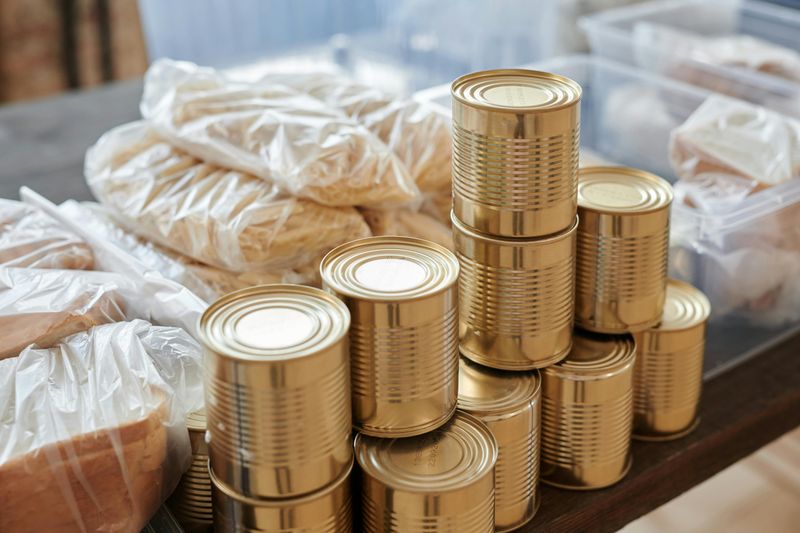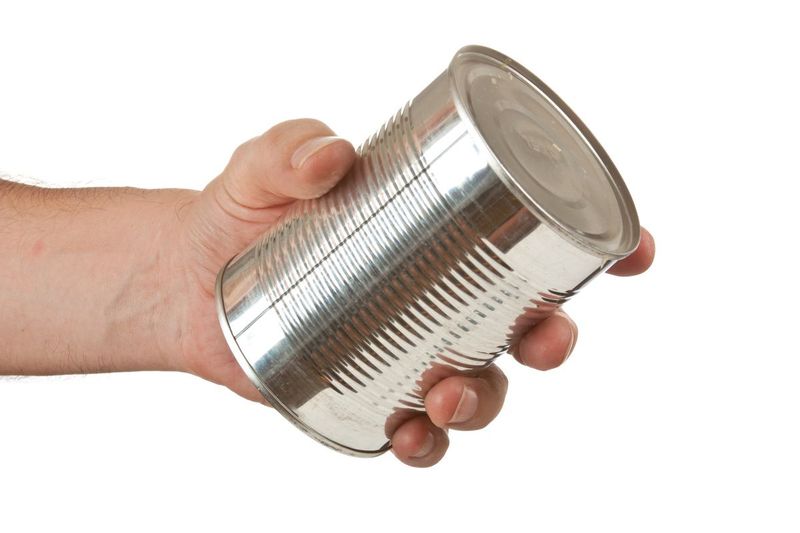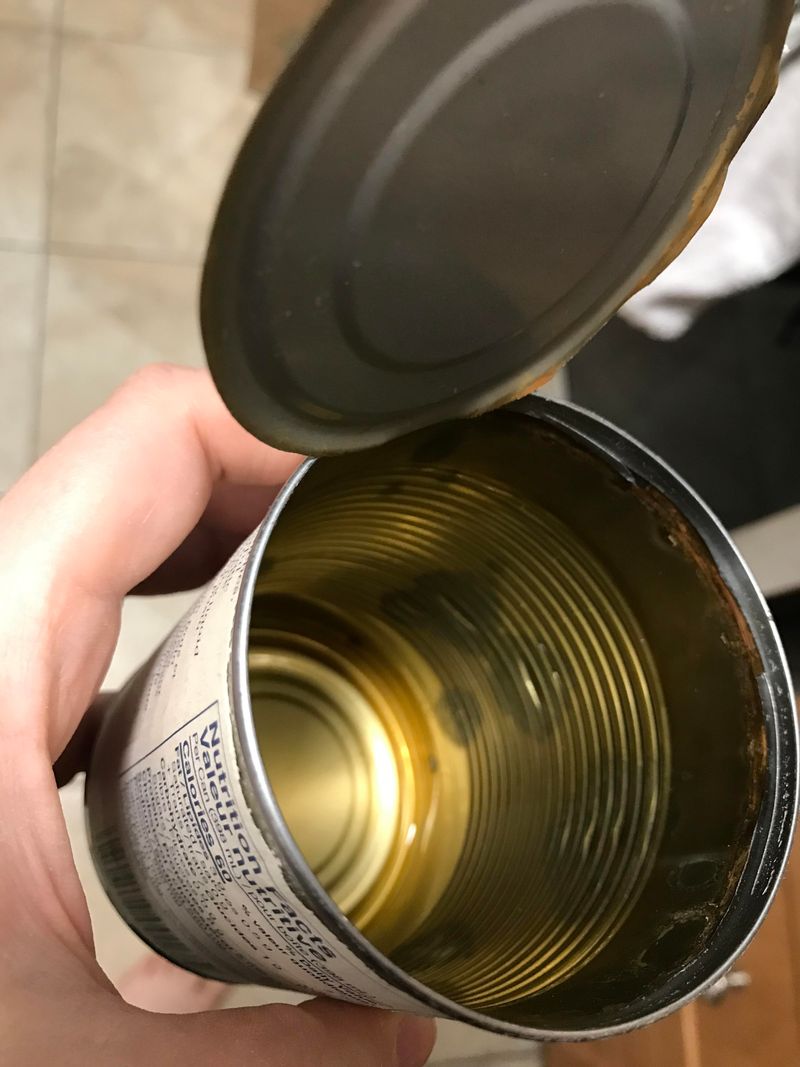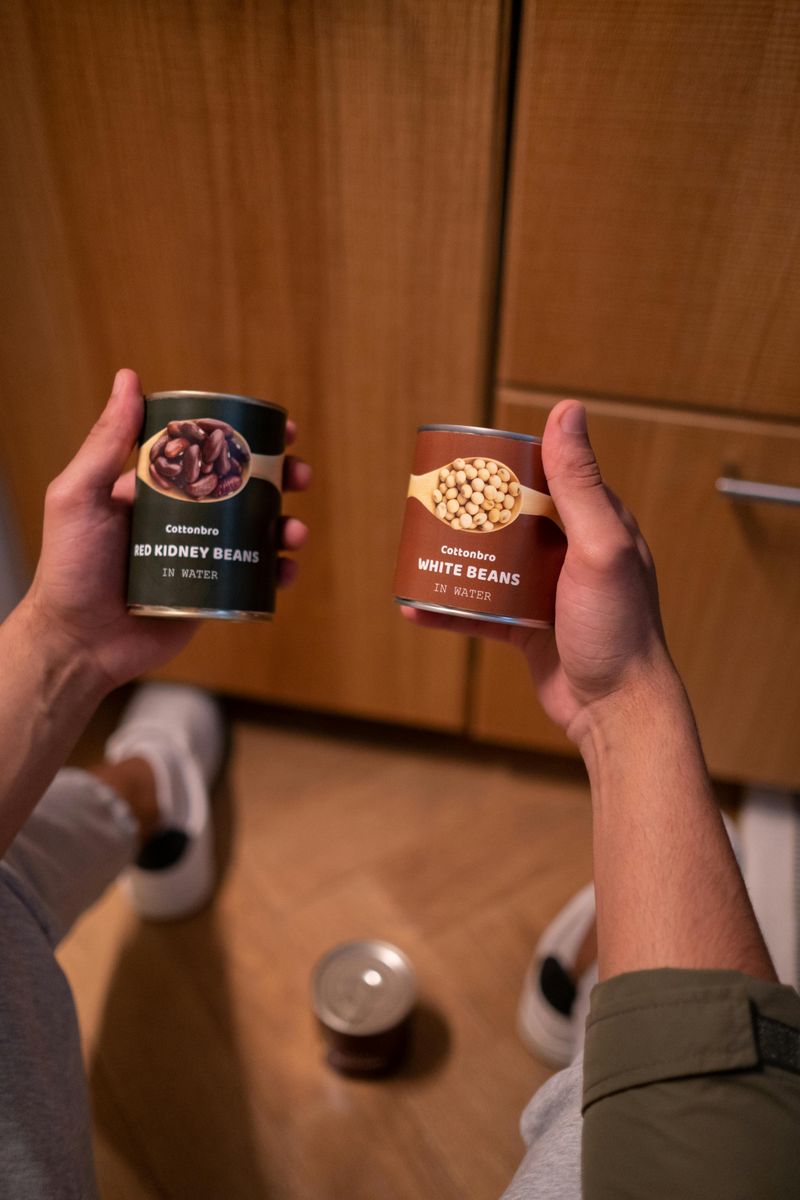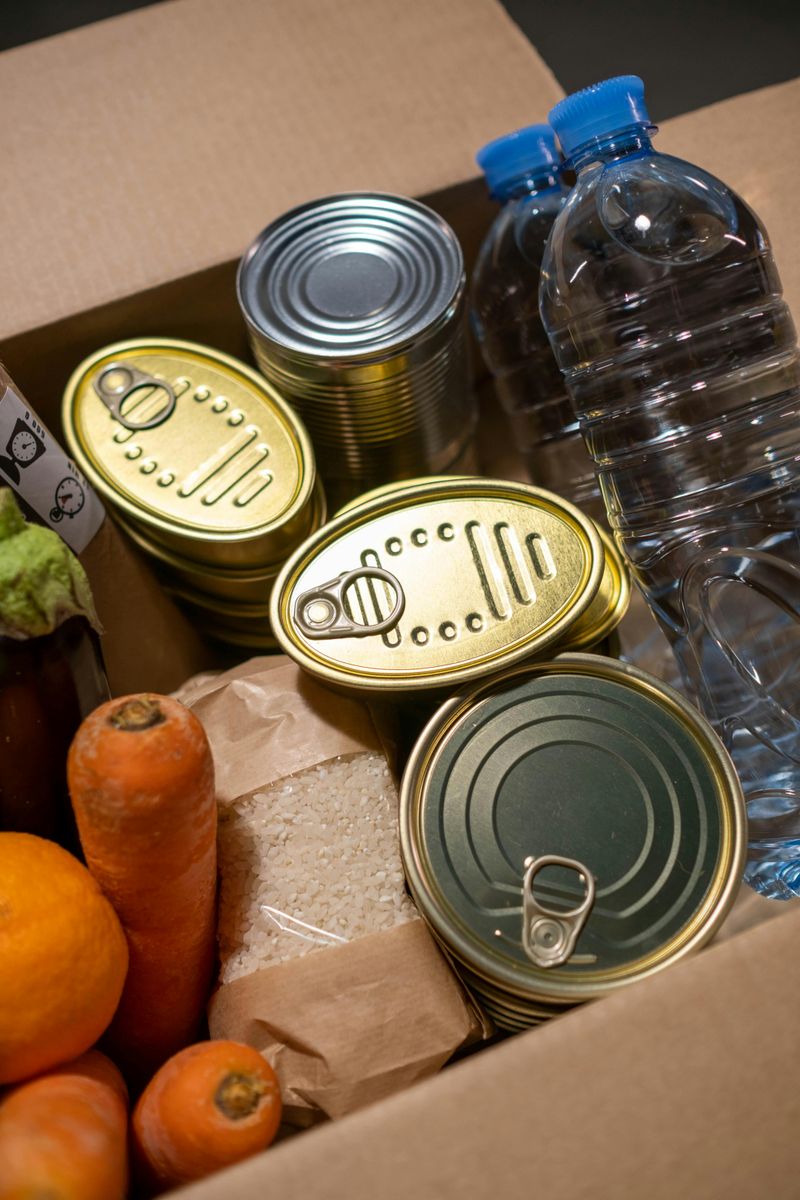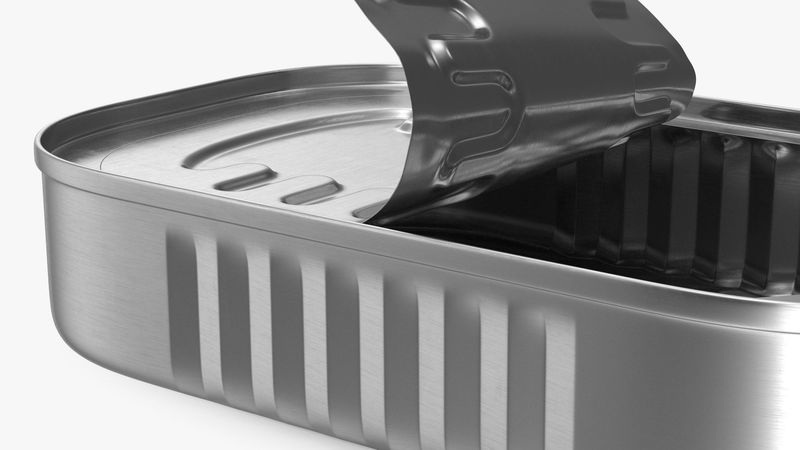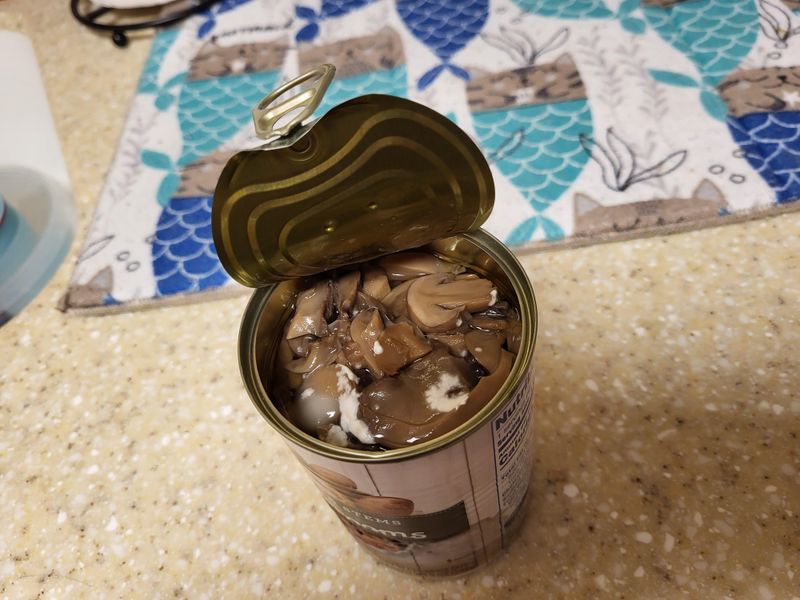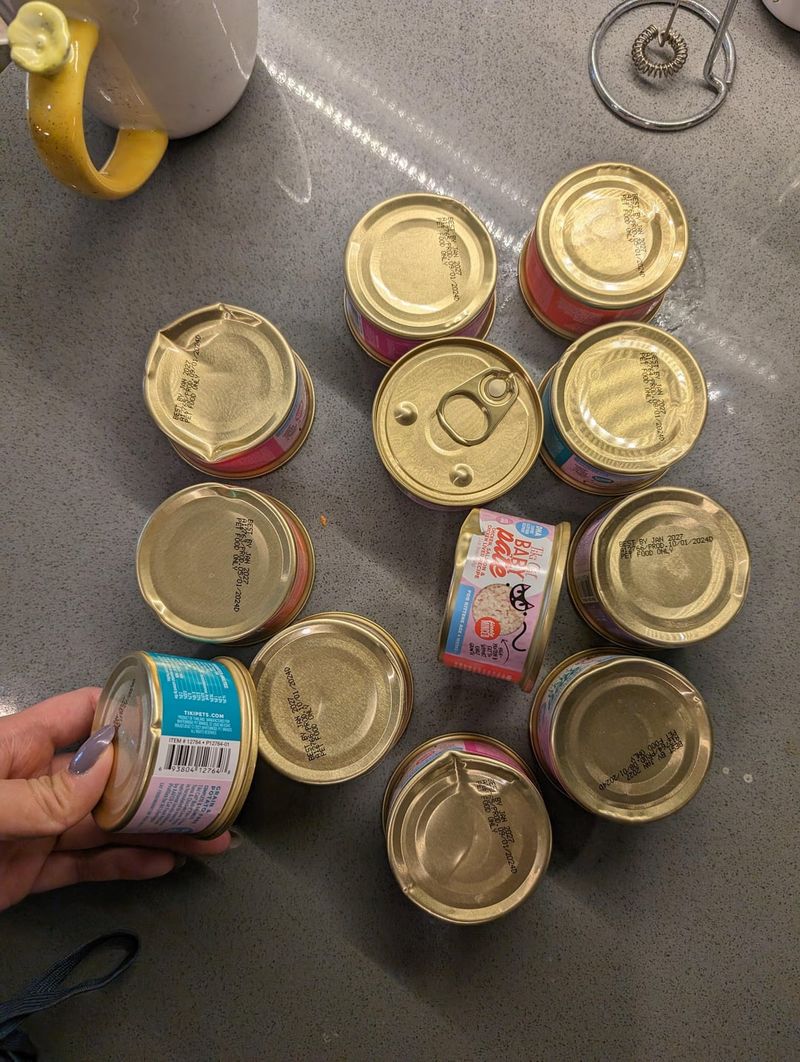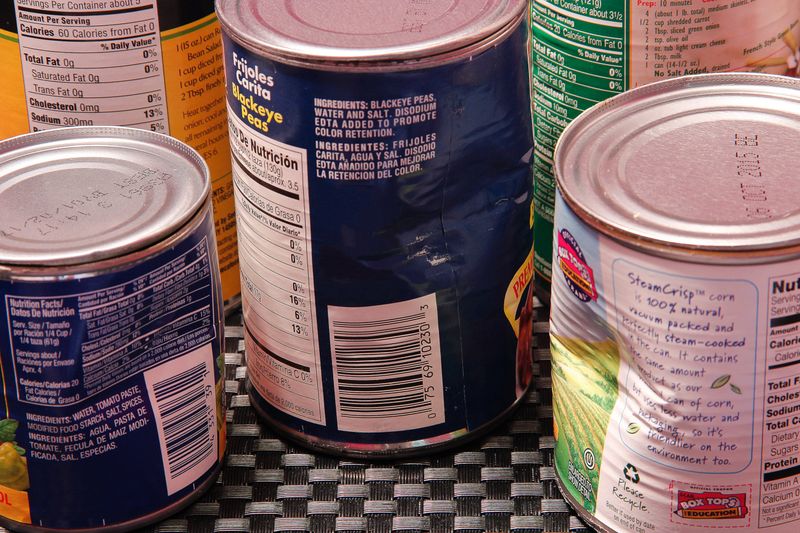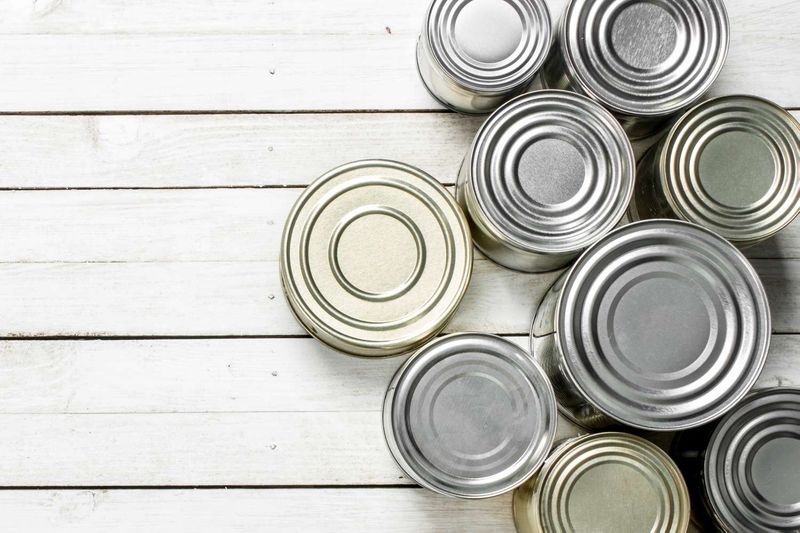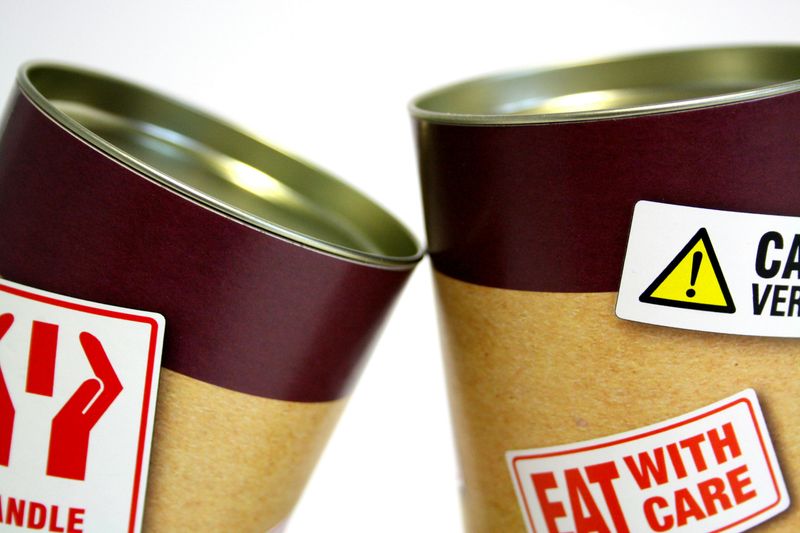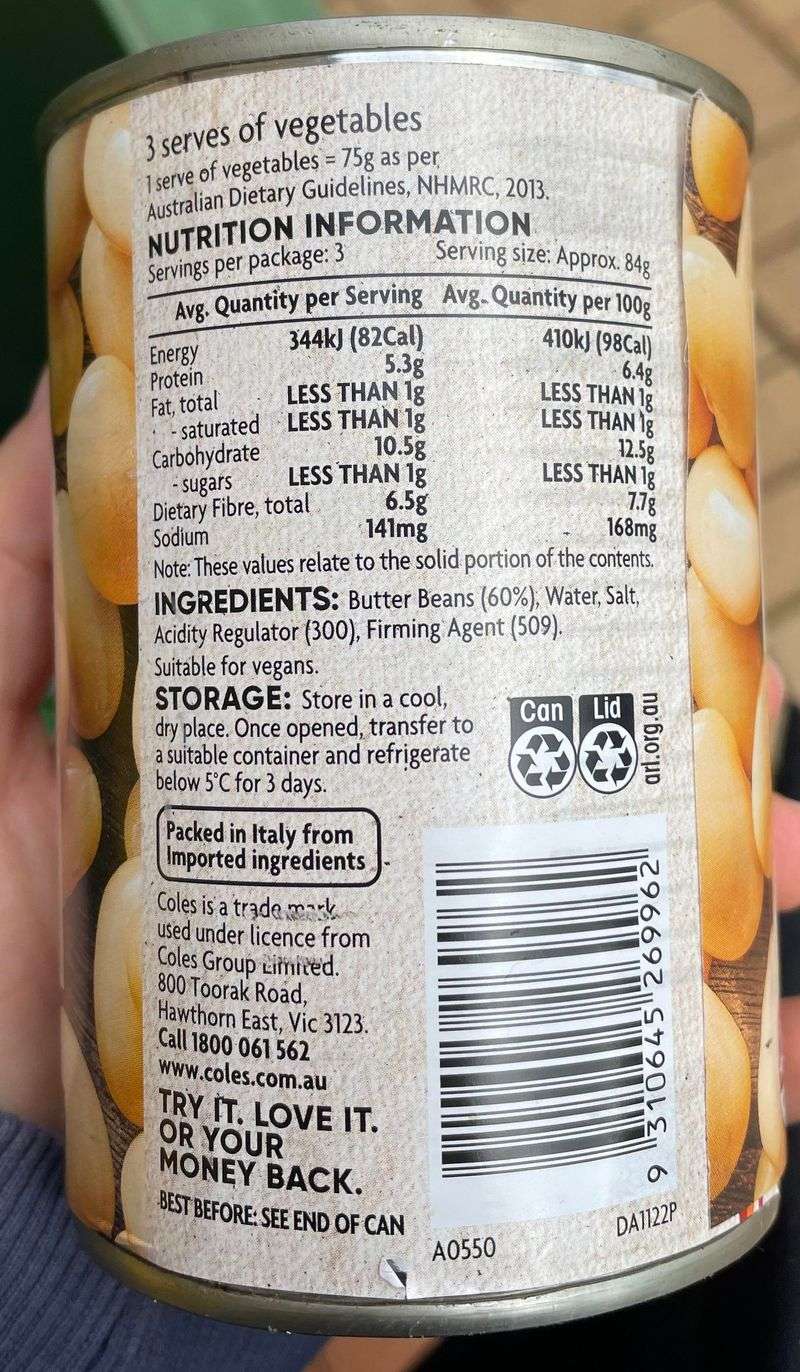We’ve all heard horror stories about canned food gone wrong—spoiled veggies, odd textures, and even serious illnesses caused by faulty cans. But the good news? A quick inspection can save you from all that trouble.
This guide will walk you through the key red flags to watch for, helping you make smarter choices at the store. With just a few simple checks, you can enjoy your canned veggies worry-free!
1. Dented Can? Beware
When you spot a dented can on the shelf, pause and assess its severity. Dents can compromise the can’s integrity, leading to potential contamination. Even small dents might cause damage to the protective lining, increasing the risk of bacteria entering the can.
If you see a dent, it’s best to leave it and choose a can that appears intact. A pristine can ensures the product’s safety and quality. Always prioritize safety over a discounted price.
2. Bulging Can? Walk Away
A bulging can is a significant red flag that should never be ignored. It indicates possible bacterial growth inside, leading to an unsafe product.
The pressure from gases produced by bacteria causes the can to bulge, making it dangerous to consume. A bulging can could mean botulism, a severe form of food poisoning. If you encounter a bulging can, put it back and inform a store employee.
3. Odd Coloring? Look Out
If the color of the canned veggies looks off, it’s time to investigate. Unusual coloring could indicate spoilage or the presence of additives. Vegetables should maintain their natural hues, even when canned.
Observe the appearance of the liquid inside as well. If it seems murky or discolored, it might be best to opt for another product. Properly processed canned veggies should appear vibrant and fresh.
4. Rusty Can? Reconsider
Rust on a can is a warning sign that should not be overlooked. It can indicate prolonged exposure to moisture and potential breach of the can’s integrity. Rust might lead to holes, allowing bacteria to enter.
If a can is rusted, it’s best to avoid purchasing it. Rust compromises the safety and quality of the contents. A rust-free can is a good indicator of a product properly stored and maintained.
5. Too Many Preservatives? Think Twice
When you pick up a can, take a moment to read the ingredients. A long list of preservatives may affect the taste and nutritional value of the product. Canned veggies should be simple, with minimal additives.
If you see a lengthy list of unfamiliar chemicals, consider looking for a different brand. Opt for cans that have straightforward, recognizable ingredients to ensure you’re getting a wholesome product.
6. Expired Date? Skip It
Always check the expiration date before placing a can in your cart. Consuming expired canned vegetables can pose health risks, including foodborne illnesses. Even if the can appears fine, the contents might not be.
If the expiration date has passed, it’s best to select a fresher option. Freshness ensures better taste and nutritional quality. Pay attention to expiry dates for the safest and most enjoyable experience.
7. Damaged Label? Proceed With Caution
A damaged label might not seem like a big deal, but it can be. It could indicate rough handling or poor storage conditions, affecting the can’s contents.
The label provides valuable information about the product. If the label is torn or missing, it may be challenging to verify expiration dates or nutritional information.
8. Strange Odor? Avoid
If you notice a strange odor emerging from a can, even if it’s still sealed, it’s a red flag. Off-putting smells may indicate spoilage or contamination, posing a risk to your health.
If a can doesn’t smell right, it’s best to avoid it and choose another. Your senses are a reliable indicator of whether a product is fresh and safe to consume. Trust your sense of smell. If something seems off, it probably is.
9. Unfamiliar Brand? Research First
Trying new brands can be exciting, but it’s essential to research unfamiliar ones. Some brands might not adhere to safety and quality standards you’re used to. Ensure you are familiar with the brand before buying.
Check online reviews or ask friends for recommendations. Brands with a solid reputation are more likely to provide safe, quality products. Taking a few minutes to research can save you from potential health risks.
10. Leaking Can? Steer Clear
A leaking can is an immediate no-go. It suggests potential compromise in the integrity of the can, making its contents unsafe. Leaks may be due to manufacturing defects or damage during transportation.
If you come across a leaking can, notify a store employee. Leaks can lead to spoilage and contamination, posing serious health risks. Choose products that are well sealed.
11. Cloudy Liquid? Take A Step Back
Observe the liquid inside the can if possible. Cloudy liquid may indicate spoilage or poor quality processing. The liquid should be clear and complement the color of the vegetables.
If the liquid looks murky, consider selecting a different option. Clarity often reflects the quality and safety of the product. Ensure the liquid looks as fresh as the vegetables themselves.
12. Unusual Sound? Be Wary
When you shake a canned veggie, pay attention to the sound it makes. An unusual sound might indicate spoilage or improper sealing. Contents should move smoothly without any rattling.
If you hear something odd, it’s best to leave that can and choose another. A consistent sound means the product is likely fresh and intact. Trust your instincts and select cans that sound right for a safer choice.
13. Sticky Residue? Handle With Care
Sticky residue on a can might indicate a leak or spill. It’s a sign that the can has been compromised, possibly affecting the quality and safety of its contents.
If you feel any stickiness, it’s wise to opt for a different can. Clean cans are a better choice, ensuring that the product inside is uncontaminated.
14. Damaged Rim? Check Closely
Inspect the rim of the can carefully. A damaged rim can lead to sealing issues, making the contents vulnerable to contamination. This is a spot that can go unnoticed if not examined closely.
If the rim appears damaged, it’s best to select another can. The integrity of the seal is crucial for maintaining freshness and safety.
15. Poor Labeling? Question It
Clear labeling is essential for making informed choices. If you find a can with poor labeling, it might signal a lack of attention to detail from the manufacturer, which might extend to the product quality.
Ensure the label provides comprehensive information, including ingredients and nutritional facts. If the label seems subpar, consider opting for another brand.
16. Unusual Ingredients? Consider Alternatives
Review the ingredients list carefully. Unusual or chemical-sounding ingredients can be a sign of excessive processing. Canned veggies should ideally contain simple and familiar ingredients.
If you encounter ingredients you don’t recognize, it’s wise to consider another product. Stick with brands that use natural ingredients for better quality. Opt for products that prioritize transparency and simplicity in their ingredient lists.
17. Broken Seal? Avoid At All Costs
A broken seal is one of the most serious warning signs. It indicates that the can’s integrity has been compromised, making its contents prone to contamination.
If you find a can with a broken seal, avoid purchasing it and inform store staff. The safety and freshness of the product cannot be guaranteed. Always ensure the seal is intact before buying.
18. Mold on Can? Discard Immediately
Mold on or in a can is an unmistakable sign of trouble. It suggests exposure to moisture and possible contamination of the contents.
If you spot mold, discard the can immediately. Mold indicates poor storage conditions, and consuming such products could risk your health. Ensure the can’s surface is clean and dry before purchasing.
19. Wobbly Bottom? Investigate
A wobbly bottom on a can might indicate internal pressure issues, which could lead to spoilage. Cans should sit flat and stable on a surface.
If a can wobbles, it’s best to investigate further or choose another. Stability is key to ensuring the product inside is uncompromised. Look for cans that have a firm, even base. This suggests that the can is properly sealed and its contents are fresh.
20. Poorly Sealed Lid? Be Cautious
A poorly sealed lid can compromise the can’s contents, leading to potential contamination. Ensure the lid is firmly attached and shows no signs of tampering.
If the lid appears loose or unevenly sealed, it’s best to avoid it. Select a can with a properly sealed lid to ensure safety. Inspect the lid carefully for a secure seal. This guarantees the contents are safe and fresh for consumption.
21. Off-Brand Can? Double-Check
While off-brand products can be budget-friendly, they may not always adhere to the same quality standards. Double-check before choosing an unfamiliar brand.
Look for certifications or reviews that assure the product’s quality and safety. Opt for brands with a track record of reliability. And as we mentioned before, a little research can go a long way.
22. Inconsistent Texture? Be On Guard
Texture is an important indicator of quality. If the veggies inside appear inconsistent in texture, it may signal processing issues or spoilage.
If you notice this, reconsider your choice and opt for another can. Consistent texture indicates the product is fresh and properly processed.
23. Strange Taste? Dispose Immediately
If you experience an unusual taste after trying canned veggies, it’s a warning sign. An off taste can indicate spoilage or contamination.
If this occurs, it’s best to dispose of the product and not consume any further. Your taste buds can be a reliable guide to food quality.
24. Questionable Origin? Verify
The origin of your canned vegetables matters. Ensure that the product’s label clearly states where it was sourced from and packaged.
If the origin is unclear, it might be worth selecting another product with transparent sourcing information. Knowing the origin helps guarantee quality and safety. Select products that proudly display their origin for peace of mind.
25. Unexpected Foam Formation? Throw It Away
Foam inside a can when opened is usually an unexpected and undesirable sign. This can appear as bubbles or frothy substance on top of the vegetables or liquid. Foam formation might suggest fermentation or bacterial activity, neither of which is good for consumption.
Always be vigilant with foam, as it’s a clear indicator that the product might be compromised. Consuming such items could lead to foodborne illnesses. When in doubt, it’s safer to dispose of the can than to risk your health.
26. Unclear Nutritional Info? Do Your Research
Nutritional information is crucial for making healthy choices. If the label is unclear or incomplete, it may indicate a lack of attention to detail from the manufacturer.
If you encounter this, investigate further or choose a brand with clear labeling. Proper nutritional info helps you make informed dietary decisions.

